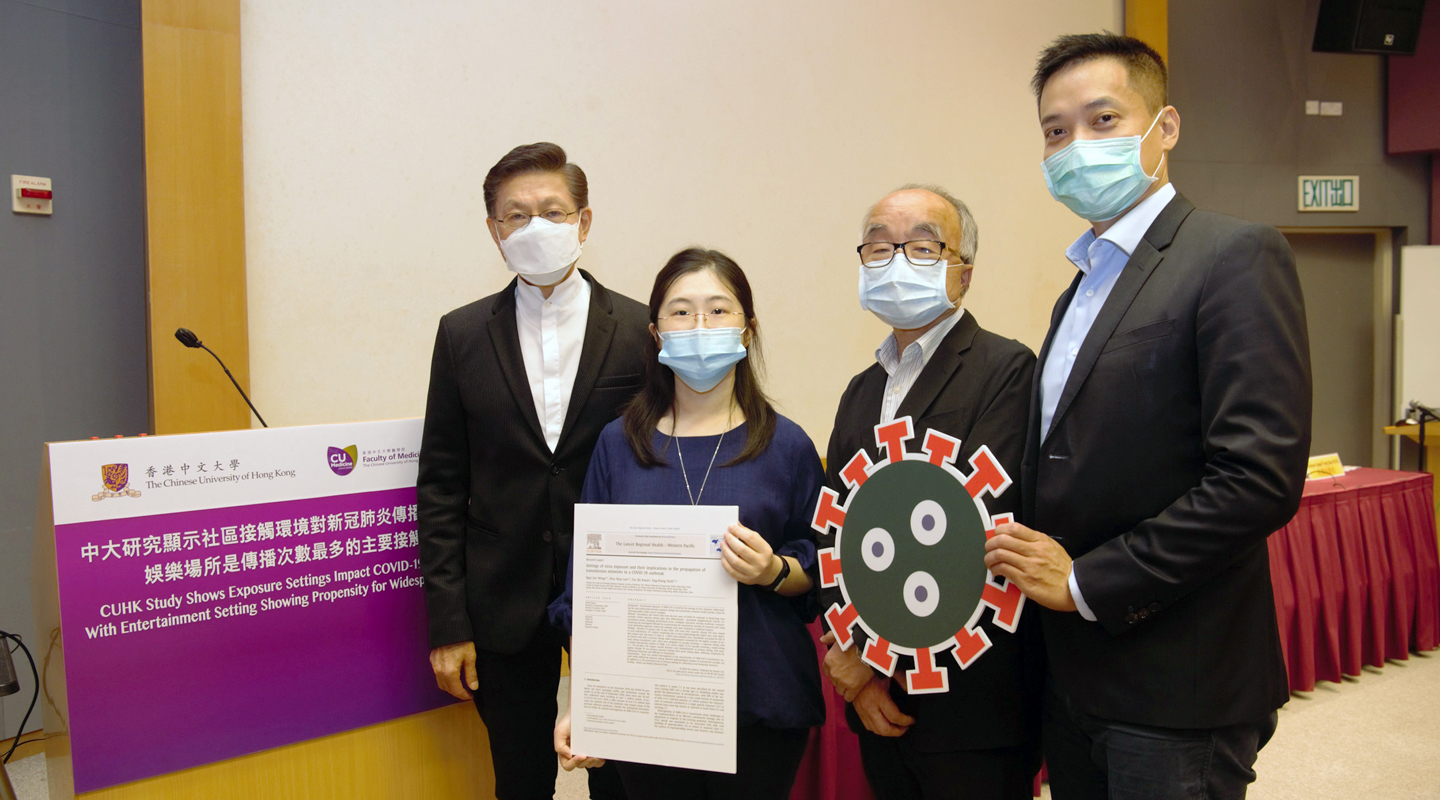Dear readers, With the launch of e-newsletter CUHK in Focus, CUHKUPDates has retired and this site will no longer be updated. To stay abreast of the University’s latest news, please go to https://focus.cuhk.edu.hk. Thank you.
Propagation with a Pattern
CU Medicine proves exposure settings impact COVID-19 transmission

A study conducted by The Jockey Club School of Public Health and Primary Care of the Faculty of Medicine showed that physical settings of an environment play a vital role in the propagation of COVID-19 in society.
‘This study is the first of its kind—this is the first time for people to use network epidemiology to investigate the relationship between different physical settings and their propensity for propagation,’ said Prof. Lee Shui-shan, deputy director of the Stanley Ho Centre for Emerging Infectious Diseases. ‘The findings from the study are critical for controlling the spread of COVID-19 in the community.’
Twelve types of exposure setting were scrutinized by the research team, namely, household, neighbourhood, eateries, entertainment (e.g., bar and karaoke), parties, shopping, personalized service (e.g., gymnasium and beauty parlour), workplace, education, worship, healthcare and transport. These settings were differentiated by the number of people in the transmission networks, the duration and frequency of exposure, types of social contacts and whether they were indoor or outdoor environments.
Upon applying social network analytic methodologies and reconstructing propagation cascades of cluster transmissions, they found that entertainment accounted for the highest number of primary setting transmissions. On the other hand, transmission linkages in transport, neighbourhood, workplace and eateries were limited.
‘It is important to adopt an exposure setting specific approach and adjust public health interventions strategies accordingly,’ Prof. Yeoh Eng-kiong, director of the Centre for Health Systems and Policy Research at the Jockey Club School of Public Health and Primary Care, remarked. ‘For instance, based on the results from the study, social distancing measures among certain settings can be relaxed, whereas for others, building risk mitigation and management measures to enable optimal public health control of the pandemic are of paramount importance.’
Prof. Samuel Wong, director of the Jockey Club School of Public Health and Primary Care, also emphasized that there is an interrelationship between exposure settings and public health intervention strategies. ‘When we look at the pattern of the third wave in Hong Kong, we see that after the enforcement of social distancing regulations, the number of cases which spread through entertainment settings had not increased.’
Results of this study have been reported in Lancet Regional Health—Western Pacific.